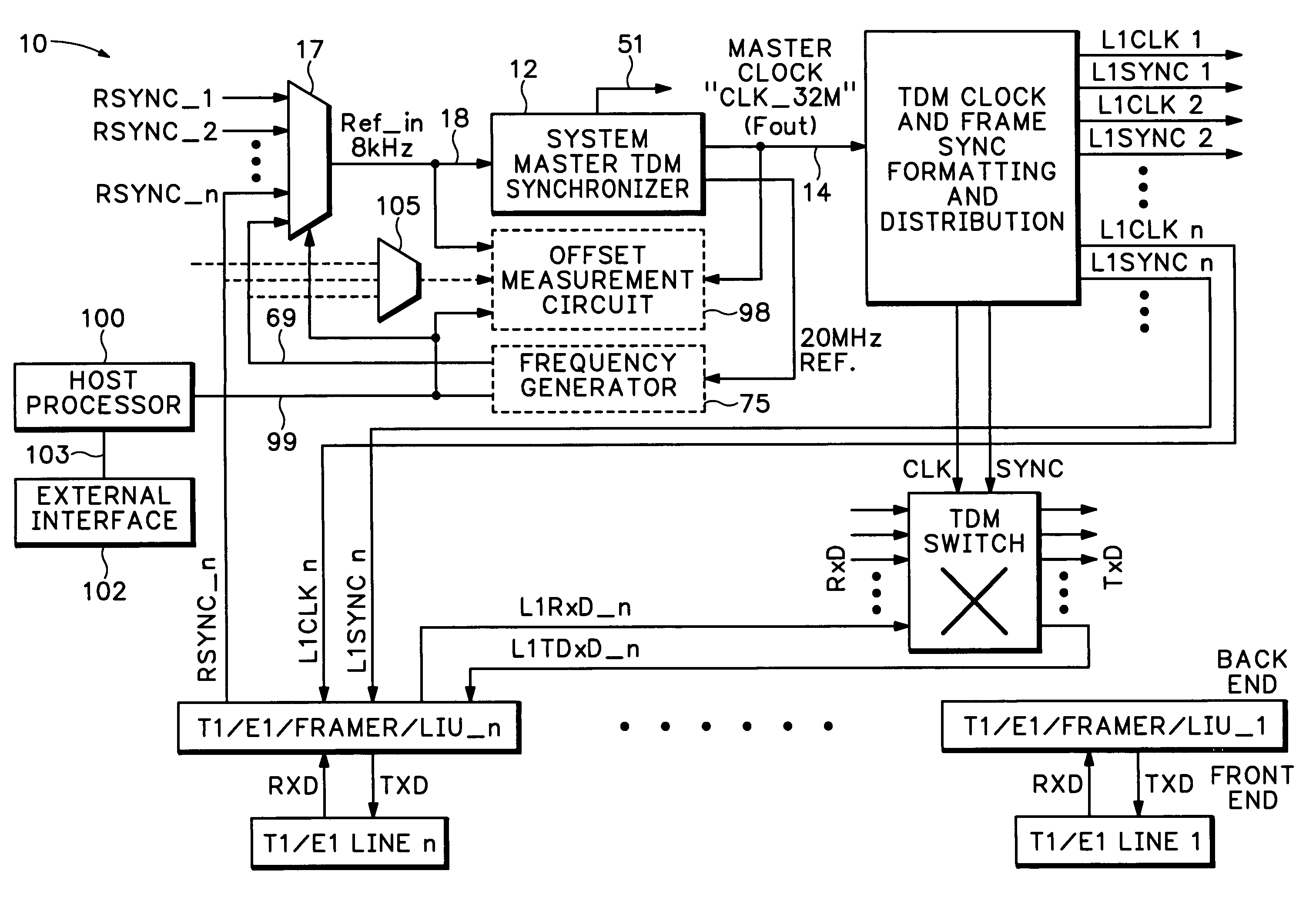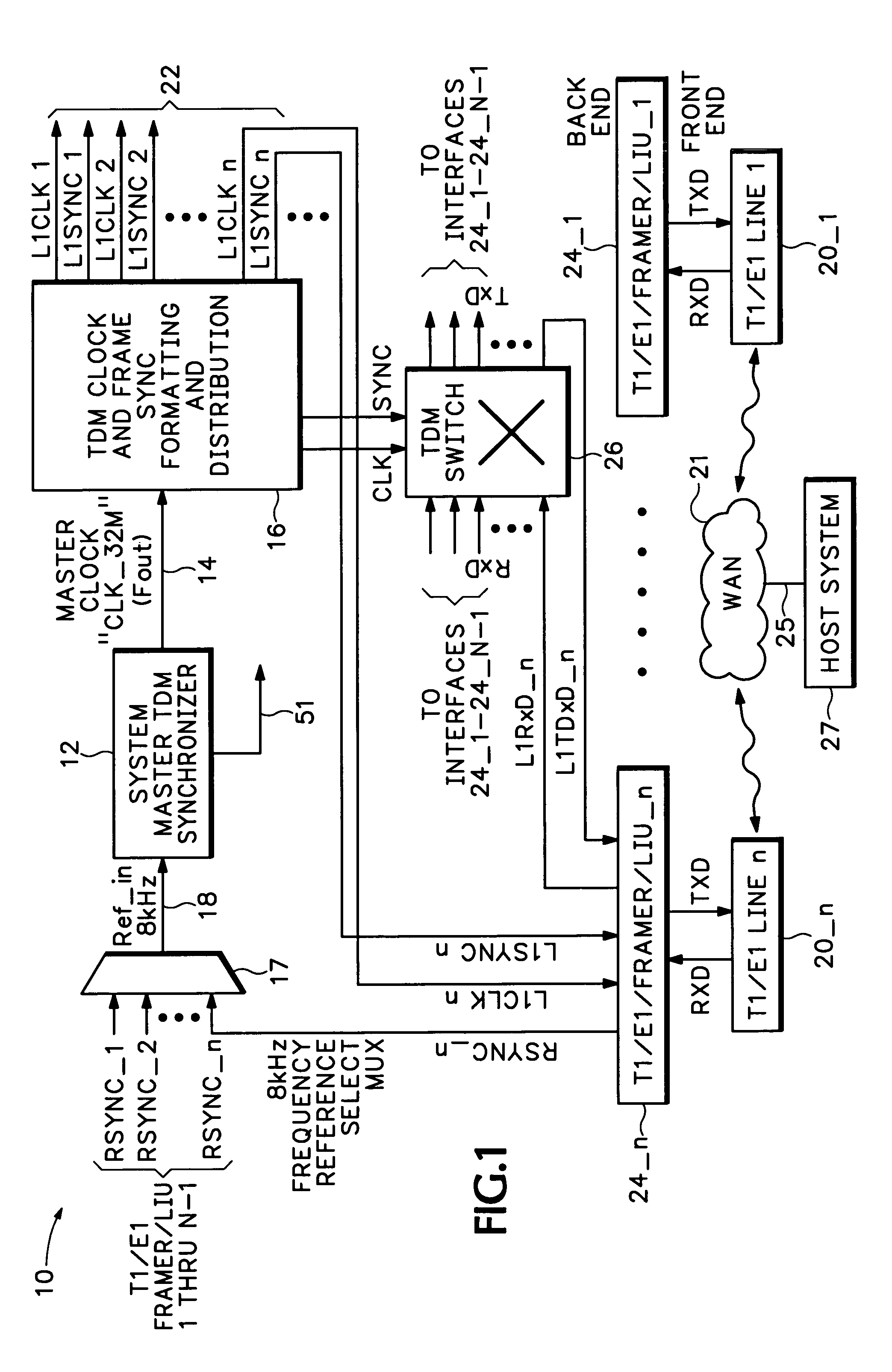Method and apparatus for testing synchronization circuitry
a synchronization circuit and circuit technology, applied in the field of methods and apparatus for testing synchronization circuitry, can solve the problems of frequency capture and lock range, limited lock range of analog plls used in tdm synchronization circuits, and limited practical design limitations of synchronization and timing recovery
- Summary
- Abstract
- Description
- Claims
- Application Information
AI Technical Summary
Benefits of technology
Problems solved by technology
Method used
Image
Examples
Embodiment Construction
[0029]In order to confirm that the APLL 54 and the DPLL 50 together are capable of locking to the required range of input frequencies, a frequency synthesis scheme using dithering techniques is employed to produce an 8 kHz+ / −“offset” ppm frequency at the input to the DPLL 50 (FIG. 3).
[0030]A suitably chosen low frequency (Flow) and high frequency (Fhigh) are used to synthesize the input reference frequency (Ref—in). To confirm that the APLL and DPLL are locked, a frequency counter clocked from Fout (32.768 MHz) of APLL 54 measures the number of counts over an integral number N of Ref—in 18 periods. When locked, the resulting count should be N*32768 / 8=N*4096. Any deviation from this count represents a “ppm” difference of output Fout—APLL 14 relative to the input frequency Ref—in 18.
[0031]The same integration frequency counter can be used to measure the absolute deviation of an external 8 kHz RSYNC signal relative to the accurate / stable 20 MHz signal. In one embodiment, the 32.768 MHz...
PUM
 Login to View More
Login to View More Abstract
Description
Claims
Application Information
 Login to View More
Login to View More - R&D
- Intellectual Property
- Life Sciences
- Materials
- Tech Scout
- Unparalleled Data Quality
- Higher Quality Content
- 60% Fewer Hallucinations
Browse by: Latest US Patents, China's latest patents, Technical Efficacy Thesaurus, Application Domain, Technology Topic, Popular Technical Reports.
© 2025 PatSnap. All rights reserved.Legal|Privacy policy|Modern Slavery Act Transparency Statement|Sitemap|About US| Contact US: help@patsnap.com



